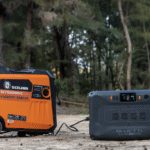Renewable Energy for Homeowners: Top 5 Efficiency Tips
Introduction to Renewable Energy
Renewable energy is becoming increasingly popular among homeowners as a way to reduce their carbon footprint and save money on energy bills. With the cost of solar panels and wind turbines decreasing, it’s now more accessible than ever to harness the power of the sun and wind to generate electricity. But with so many options available, it can be overwhelming to know where to start. In this article, we’ll explore the top 5 efficiency tips for homeowners looking to transition to renewable energy.
Tip #1: Assess Your Energy Needs
Before investing in renewable energy, it’s essential to assess your energy needs. This involves calculating your daily energy usage and identifying areas where you can reduce your consumption. You can do this by reviewing your past energy bills and identifying patterns of energy usage. This will help you determine the size of the solar panel system or wind turbine you’ll need to generate enough electricity to meet your needs.
Tip #2: Choose the Right System
There are many types of renewable energy systems available, including solar panels, wind turbines, and geothermal systems. Each type of system has its own advantages and disadvantages, so it’s essential to choose the right one for your needs. For example, solar panels are ideal for homes with a lot of sunlight, while wind turbines are better suited for homes with a lot of wind. Geothermal systems, on the other hand, are ideal for homes with a lot of space to install a heat pump.
Tip #3: Install a Grid-Tied System
Grid-tied systems are connected to the electrical grid and can sell excess energy back to the utility company. This is a great option for homeowners who want to generate their own electricity but still want to be connected to the grid. Grid-tied systems are also more cost-effective than off-grid systems, which require a battery bank to store excess energy.
Tip #4: Consider Energy Storage
Energy storage systems, such as batteries, can help homeowners store excess energy generated by their renewable energy system. This is especially important for homes that don’t have a grid-tied system or for those who want to be completely off the grid. Energy storage systems can also help homeowners reduce their energy bills by storing excess energy generated during the day for use during peak hours.
Tip #5: Monitor and Maintain Your System
Regular monitoring and maintenance are essential to ensure your renewable energy system is running efficiently. This includes checking for any damage or wear and tear on the system, as well as performing routine maintenance tasks such as cleaning the solar panels or wind turbine blades. You should also keep track of your energy usage and production to identify any areas where you can improve your system’s efficiency.
Conclusion
Renewable energy is a great way for homeowners to reduce their carbon footprint and save money on energy bills. By following these top 5 efficiency tips, homeowners can ensure their renewable energy system is running at its best and generating the most energy possible. Whether you’re looking to transition to renewable energy for the first time or want to improve your existing system, these tips will help you get the most out of your investment.
FAQs
Q: What is the best type of renewable energy system for my home?
A: The best type of renewable energy system for your home will depend on your energy needs, the amount of sunlight or wind your home receives, and your budget. It’s recommended that you consult with a professional to determine the best option for your home.
Q: How long does it take to pay off a renewable energy system?
A: The payback period for a renewable energy system can vary depending on the type of system, the cost of installation, and the amount of energy you generate. On average, a solar panel system can pay for itself in 5-7 years, while a wind turbine can take 10-15 years to pay off.
Q: Can I sell excess energy back to the utility company?
A: Yes, many utility companies offer net metering programs that allow homeowners to sell excess energy back to the grid. This can help you offset your energy bills and earn some extra income.
Q: Do I need to install a battery bank to store excess energy?
A: Not necessarily. If you have a grid-tied system, you can sell excess energy back to the grid and don’t need to install a battery bank. However, if you want to be completely off the grid or want to store excess energy for later use, a battery bank may be necessary.




_2.png?w=150&resize=150,150&ssl=1)


